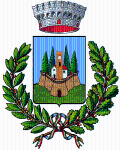Descrizione
Le Terre di Felsina determinano il meraviglioso paesaggio di antichi casolari e vigne a nord e ad est di Castelnuovo.
Felsina è un toponimo di origine etrusca, derivazione di Felzna o Felsna che poteva significare “terra fertile” o “ luogo fortificato Una tradizione narra di una zona definita “ il basso del forte” e non vanno escluse attente verifiche di alcune tracce.
Secondo Don Maroni, parroco e storico della Pieve di Sinalunga, proprio Felsina sarebbe stato un punto di passaggio della Cassia Adrianea che in epoca romana avrebbe unito Chiusi a Firenze, le ricerche archeologiche effettuate nel piano davanti al podere Santa Maria individuarono i resti di una abitazione in pietra databile I sec. a.C./I sec d. C.
Molti elementi fanno pensare che nel basso medioevo e anche dopo, il toponimo Felsina fosse così radicato nella cultura locale da essere usato per definire un ampio territorio, quandanche ci si riferisse a luoghi vicini, ma distinti. E’ il caso dell’Ospedale di Felsina, menzionato nel 1228 nei documenti del S. M. della Scala e anche nel 1254 nelle tavole di Biccherna. Da recenti ricerche d’archivio sul Concistoro senese,risulta che nel 1431 questo ospedale si trovava a Valli. Lo stesso dicasi per la chiesa di S. Maria Maddalena registrata nelle decime di fine duecento e anche quattro secoli dopo dalla relazione Gherardini, i riscontri delle visite pastorali indicano che essa era ubicata nella proprietà del Sig De Grassis , quindi nel podere di Santa Maria.
Altre perle delle terre di Felsina si riscontrano nel podere Arcidosso dove i resti medievali e le visite pastorali confermano trattarsi de castello di Cerrogrosso. Anche il podere di Rancia è terra di Felsina con la sua architettura in parte ascrivibile al XIV/XV secolo.
Nel secolo XVIII comincia a prendere forma l’attuale assetto della villa fattoria. Nel 1813 la cappella di S. Maria del Rosario risulta proprietà di Alessandro Pecci, nel 1825 l’intero complesso risulta intestato a Mattia Ricci.
A Felsina la mezzadria finì nel 1967 con l’acquisizione di tutti i beni da parte della famiglia Poggiali e la gran parte dei contadini divennero maestranze. In una pubblicazione felsinea di qualche anno fa si recitava : “furono loro, i contadini che amavano questa terra a fare la Felsina di oggi, la loro esperienza e conoscenza messa a disposizione di un grande progetto”.
Felsina è oggi terra di grandi vini e di casali, molti edifici sono disabitati, alcuni utilizzati a fini aziendali, ma la quasi totalità è manutenuta e non abbandonata.
English version:
The Lands of Felsina make up an enchanting landscape of historic farms and vineyards to the north and east of Castelnuovo.
Felsina is a toponym of Etruscan origin, derived from Felzna or Felsna which may have mean “fertile land” or “fortified place.” One tradition tells of an area defined as “the slope below the fort”, and some evidence has yet to be thoroughly substantiated. According to Don Maroni, parish priest and historian of the Parish church of Sinalunga, Felsina was likely a stop along the Cassia Adrianea Way, which in the Roman epoch connected Chiusi and Florence. Archeological research carried out in the open area opposite the Santa Maria farmhouse has identified the remains of a stone dwelling dating to between the 1st century B.C and the 1st century A.D.
Numerous elements seem to suggest that in the late Middle Ages and even afterwards, the place-name Felsina was so rooted in the local culture that it was used to define a large territory, even referring to places that were near to, but distinct from one another. Such was the case of the Ospedale di Felsina, mentioned in 1228 in documents pertaining to Siena’s Santa Maria della Scala, and in 1254 in the Biccherna panels, also in Siena. Recent archival research on the Sienese Consistory shows that in 1431, this hospital was located in Valli. The same is said of the church of S. Maria Maddalena, listed in the tithes at the end of the 13th century, and again four centuries later in the Gherardini report; pastoral visit accounts indicate that it was on the property of Sig. De Grassis, thus on the Santa Maria farm holding.
Another pearl of the Lands of Felsina is the Arcidossa farm, where the medieval ruins and accounts of pastoral visits confirm the presence of the Castle of Cerrogrosso. The Rancia farm is also a land of Felsina, with architecture in part datable to the 14th/15th centuries. In the 18th century, the current layout of the farm’s villa began to take shape. In 1813 the chapel of S. Maria del Rosario was the property of Alessandro Pecci, and in 1825 the entire complex was registered in the name of Mattia Ricci.
Sharecropping at Felsina came to an end in 1967 with the Poggiali family’s acquisition of all of the property, and most of the peasants became employed workers. A publication on Felsina from a few years ago stated: “they, the peasants who loved this land, were what made Felsina what it is today – their experience and know-how put at the disposal of a grand project.”
Felsina today is a land of great wines and farm houses – many of its buildings are uninhabited, a few used for farm business purposes, but nearly all are still maintained, and not abandoned.
Modalità d'accesso
Aperta ogni giorno dalle 10 alle 18
Indirizzo
Punti di contatto
Ultimo aggiornamento: 4 marzo 2024, 11:58

